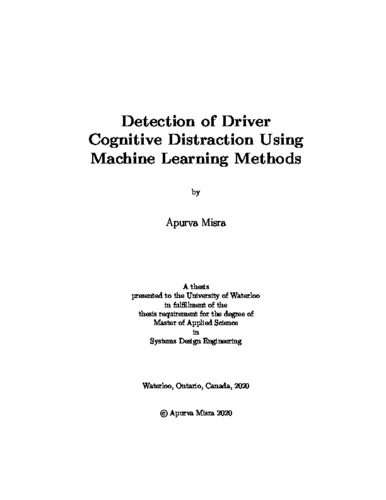| dc.description.abstract | Autonomous vehicles seem to be closer than expected on their timeline. However, there is still a decade of driving manual as well as semi-autonomous vehicles before we can experience completely automated vehicles on the road. Hence, the number of deaths due to driving accidents will take a while to drop, and we require alternative ways to prevent them.
Driver distraction is one of the primary causes of accidents. Driver distraction has posed a significant problem since the first car appeared on our roadways. According to WHO findings, 1.25 million people lose their lives every year due to road traffic crashes. One of the major causes of traffic crashes is distracted driving. As a result, there is a profound need and necessity to continuously observe driver state and provide appropriately informed alerts to distracted drivers. As defined by the National Highway Traffic Safety Administration (NHTSA), there are several types of distractions including cognitive, visual and manual distractions, which may be distinguished from each other based upon the resources required to perform the task. Cognitive distraction refers to the "look but not see" situations when the drivers' eyes are focused on the forward roadway, but his/her mind is not. Typically, cognitive distractions can result from fatigue, conversation with a co-passenger, listening to the radio, or other similarly loading secondary tasks that do not necessarily take a driver's eyes off the roadway. This makes it one of the hardest distractions to detect as there are no visible clues whether the driver is distracted. In this thesis, we have identified features from different sources such as pupil size, heart rate, acceleration that are relevant to classify distracted and non-distracted drivers through collection and analysis of driving data collected from participants over multiple driving scenarios. The Machine Learning methods used dealt with classification including, but not limited to Random Forest, Decision Trees, and SVM. A reduced feature set including pupil area, pupil vertical and horizontal motion was found while maintaining an average accuracy of 90\% across different road types. Also, the impact of road types on driver behaviour is identified.
Information about dominant features which affect the classification would aid early detection of distracted driving, and mitigation through the development of effective warning systems. The algorithm could be personalized to the specific driver depending on their reaction to driving situations. It would enable a safer and more comfortable driving experience. | en |

